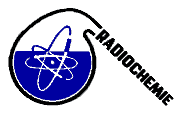Speaker
Dr
RŪTA DRUTEIKIENE
(INSTITUTE OF PHYSICS)
Description
The potential of migration of Pu at contaminated sites and also from the waste repository depends on the Pu environmental behavior determined by its chemical speciations. Depending on the ambient conditions plutonium exists in several oxidation states due to the low differences in the oxidation – reduction potentials between the oxidation states 1. The geochemical and physical characteristics of the environment (mineralogy, pH, chelating agents, redox conditions, temperature, and humidity) and microbial activity play an important role in plutonium behavior in various systems. Under appropriate conditions the activity of microorganisms could affect the chemical nature of plutonium due to changing redox condition and biotransformation of its oxidation states. The oxidation states control the solubility, complexation and thus the geochemical action of Pu 2. The direct enzymatic or indirect nonenzymatic interaction of microbes with plutonium could considerably cause its solubility or immobilization because of the formation of stable complexes with metabolites and organic degradation products.
This study is aimed at investigations on the change of plutonium oxidation states due to activity of aerobic bacteria and fungi.
Both microorganisms and fungi were isolated and identified from samples collected from the low-level radioactive waste repository. Aerobic bacteria Bacillus mycoides, Rhodococcus lutes, unidentified Gram-bacteria, and fungi Paecillomyces lilacinus, Absidia sp., Gliocladium virens have been detected in dust. Oxidized and reduced Pu was tested by two radiochemical procedures 3,4. One procedure (co-precipitation with NdF3) only differentiates between reduced Pu [Pu (III) and Pu (IV)] as well as oxidized Pu [Pu (V) and Pu (VI)]. The second (extraction chromatography) procedure was designed to differentiate between Pu (III) and Pu (IV). The amount of reduced and oxidized Pu was determined by measuring α activity after radiochemical separation.
The results of the experiment have shown that all bacteria and fungi can very slightly alter oxidation states of plutonium due to their microbial activity. No more than 8-9 % and 15 % of Pu (IV) was reduced to Pu (III) by bacteria during one hour and 24 hours of the interaction respectively. Pu by fungi was reduced no more than 1%.
References:
1. Francis A. J., Dodge C. J., Ohnuki T.: J. Nucl. Radiochem. Sci. 8, No 2, 121-126 (2007).
2. German K. E., Firsova E. V., et al.: Radiochemistry, 45, 250 (2003).
3. Ketterer M. E., Hafer K. M., Mietelski J. W.: J. Radioanal. Nucl. Chem. 73, 183 (2004).
4. Moreno L., Vaida N., Danesi P. R., La Rosa J. J., Zeiller E., Sinojmeri M.: J. Radioanal. Nucl. Chem. 226, 297 (1997).
Primary author
Dr
RŪTA DRUTEIKIENE
(INSTITUTE OF PHYSICS)
Co-authors
Dr
ALGIMANTAS PAŠKEVIČIUS
(Institute of Botany of Nature Research Center)
Dr
BENEDIKTA LUKŠIENĖ
(Institute of physics)
Dr
DALIA PEČIULYTĖ
(Institute of Botany of Nature Research Center)
Dr
DALIS BALTRŪNAS
(Institute of physics)
Prof.
VIDMANTAS REMEIKIS
(Institute of physics)

